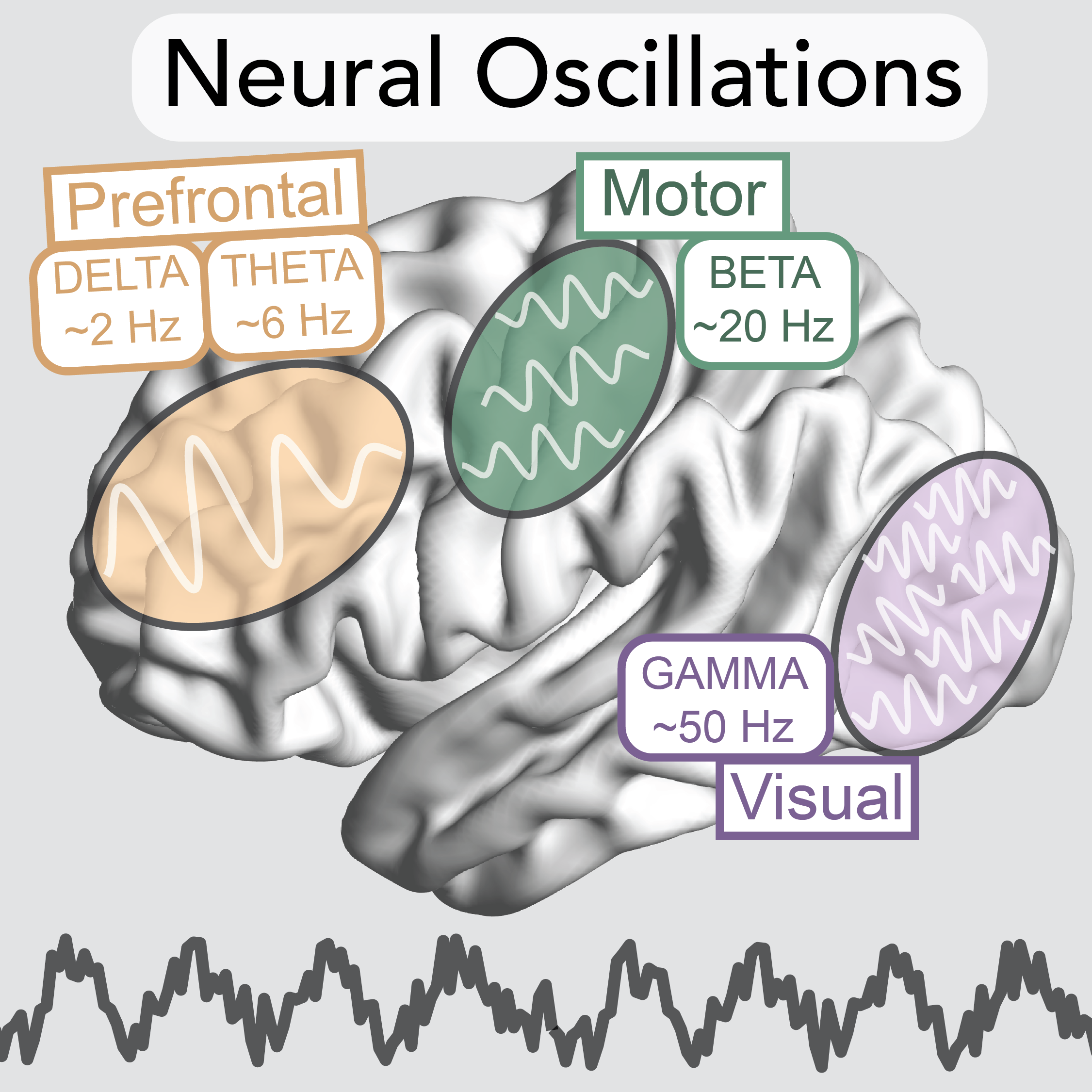Our Research
-
![]()
With the evolution of the prefrontal cortex, humans are able to navigate a complex world and experience a rich inner life. Our ability to process abstract information and pursue personal goals is referred to as cognitive control. Our research seeks to better understand multiple aspects of cognitive control including selective attention, working memory, reward-based decision-making, and rule acquisition.
-
![]()
Coherent activation of populations of neurons generates prominent electric fields that can be measured from the scalp. Once generated, these electric fields have the ability to modulate and organize neural activity. Neural oscillations are now understood to serve as a fundamental mechanism for brain regions to communicate with each other. When human exert cognitive control, the prefrontal cortex becomes electrically coupled with other parts of the brain and control signals are transmitted throughout the cerebral cortex and subcortical regions.
-
![]()
The mental health crisis has reached a fever pitch in this country. In order to more effectively treat mood disorders such as depression and anxiety, we need to better understand how changes in neural activity underlie symptom presentation. Using cognitive tasks in people experiencing mood disturbances, our lab quantifies how neural circuit dynamics correlate with symptom severity. Then, we use targeted neurostimulation to change this neural activity and impact cognition. Our long-term goal is to develop personalized interventions for psychiatric illness using non-invasive brain stimulation.
-
![]()
The brain is organized into dynamic functional networks. Using functional MRI, we localize the neural circuits that underlie cognitive control. Then, we target these circuits with fMRI-guided brain stimulation. Using EEG, we quantify phase-alignment between electrical oscillations in different regions essential for communication. Observations from EEG allow us to develop neurostimulation techniques that directly target the electrical substrate for cognitive control.
-
![]()
In order to establish a causal role for neural oscillations in cognitive control, we must experimentally induce a change in neural oscillations and demonstrate a subsequent change in cognitive control. Rhythmic transcranial magnetic stimulation (TMS) enables us to target a specific region and deliver carefully timed magnetic pulses to drive oscillatory activity. Our previous research demonstrates that the impact of rhythmic TMS on cognition is frequency-specific and region-specific.
-
![]()
Similar to rhythmic TMS, we deliver electric current through the scalp in order to modulate electrical activity in the brain. The advantage of transcranial alternating current stimulation (tACS) is that the electric waveform can be arbitrarily designed to mimic naturally-occurring electrical activity patterns. For example, low-frequency neural oscillations in prefrontal cortex orchestrate faster-frequency oscillations in visual and motor cortex during cognitive control, called cross-frequency coupling. After measuring with EEG, cross-frequency tACS mimics and enhances the endogenous activity.






